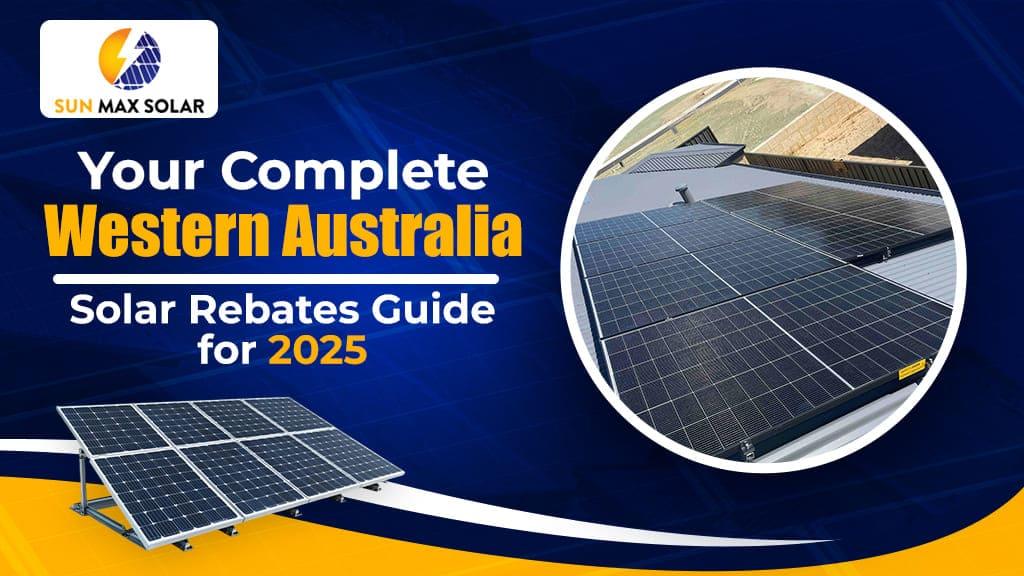Notifications

8 minutes, 14 seconds
-29 Views 0 Comments 0 Likes 0 Reviews

Solar energy is more relevant than ever as Australians keep looking for solutions to lower their environmental impact and fight growing electricity rates. Government-backed incentives are making solar more accessible in Western Australia (WA), where the solar rebate WA program is significantly increasing both domestic and business installations.
Many homes and companies are wondering: Is now the greatest time to make solar investments as 2025 is already under way? The answer is yes, particularly if you wish to benefit from the present solar rebate scheme before possible modifications take place.
The solar rebate The federal Small-scale Renewable Energy Scheme (SRES), which offers financial incentives for homes and small businesses to install qualified solar systems, largely supports WA programs. The WA government does not directly grant any state-based cash rebates, however the national program offers significant benefits to WA citizens.
Small-scale Technology Certificates (STCs), which you can trade for a discount on your solar system installation, comprise the rebate. Your location and the size of the system determine the amount of STCs you obtain. In WA, the sun-rich environment allows you to create more STCs per kilowatt, so boosting your rebate.
Until it runs out in 2030, the STC-based rebate reduces yearly. The refund has declined somewhat as we traverse 2025 compared to 2024 and will continue to drop annually. This makes a strong financial argument for timing your solar installation to be sooner rather than later.
The current subsidy for a conventional 6.6kW solar system in Perth can still reduce almost $2,000 from the overall installation cost. Many WA households are discovering that payback times are as short as three to five years, hence solar is a low-risk, high-reward investment even if installation prices remain competitive.
While WA does not now provide a state-level upfront solar incentive, there are related initiatives that support solar acceptance:
One is the Distributed Energy Buyback Scheme (DEBS).
The DEBS lets solar consumers receive credits for extra electricity sent to the grid, replacing the more antiquated feed-in tariff program. Even although the rates have dropped from past years, they still greatly help to lower your electricity costs. DEBS currently pays extra for electricity exported during peak demand hours (3pm to 9pm), so motivating homes to adopt smart inverters and battery storage.
2. Pilot Programs—Solar Battery Rebates
While WA does not currently have a statewide battery refund, pilot projects and experiments are under continuous operation in cooperation with Western Power and Synergy. For qualified homes, these programs provide greatly discounted battery systems. Should they be effective, they could open the path for a future Western Australia solar rebate, especially aiming at energy storage.
3. Greenfinancing and interest-free loans
To help with solar system installations, several municipal governments and green banks provide low-interest or interest-free financing. Homes that wish to instantly profit from solar savings but cannot afford an upfront investment would notably benefit from these financing options.
WA's sunny climate, large rooftops, and declining grid electricity prices help it to be especially positioned to gain from solar. WA citizens are now mostly benefiting from these:
Particularly when most of their power is used during the day or stores extra energy using batteries, households with solar are finding savings of up to 70% in their electricity bills.
Energy Independence: Solar offers a consistent substitute given grid weaknesses and regular increases in electricity rates. You're even less depending on the grid when coupled with batteries.
A solar-powered house appeals more to buyers since many are ready to pay a premium for houses with reduced running expenses.
Reducing your carbon impact by choosing renewable energy will inspire many homeowners greatly. WA's plenty of sunlight makes this change extra powerful.
Important Issues Prior to Purchase
Should you want to claim WA's solar refund in 2025, consider the following:
Select an installer with CEC-accreditation. The system must be built by a Clean Energy Council (CEC)-certified installer employing approved items to qualify for the rebate.
Check the orientation and shade of your roof; solar works best when panels face north or northwest with little shadow.
Right System Size: Not always better is bigger. Think over your present and prospective energy consumption. Most WA houses choose between a 5kW–10kW system.
Though they are still a major outlay, batteries are becoming more affordable because to pilot rebates and shifting energy rates.
Though unknown, the future of solar rebates WA and renewable energy subsidies seems bright. Although the government STC plan runs until 2030, rebates and buyback rates could be influenced by more changes in energy policy, grid management, and market demand.
Recently declaring multi-billion-dollar investments into green hydrogen and large-scale solar projects, WA's government has demonstrated great support for renewables. Near future home assistance schemes, perhaps involving new battery subsidies or dynamic pricing structures to further incentivise self-consumption and grid contribution, are probably going to inherit this momentum.
Final Thought: Don't Miss the Window for 2025
If you have been considering WA, 2025 is looking to be a wise time to go solar. STCs help the solar rebate WA program remain attractive; the sooner you act, the more financial incentive you will get before the rebate decreases more next year.
There has never been a better chance to cut your expenses and environmental impact with federal funding, growing electricity rates, and WA's sun-soaked climate. To guarantee you maximise every dollar of your investment, just be sure you research, compare estimates, and deal with reliable fitters.

